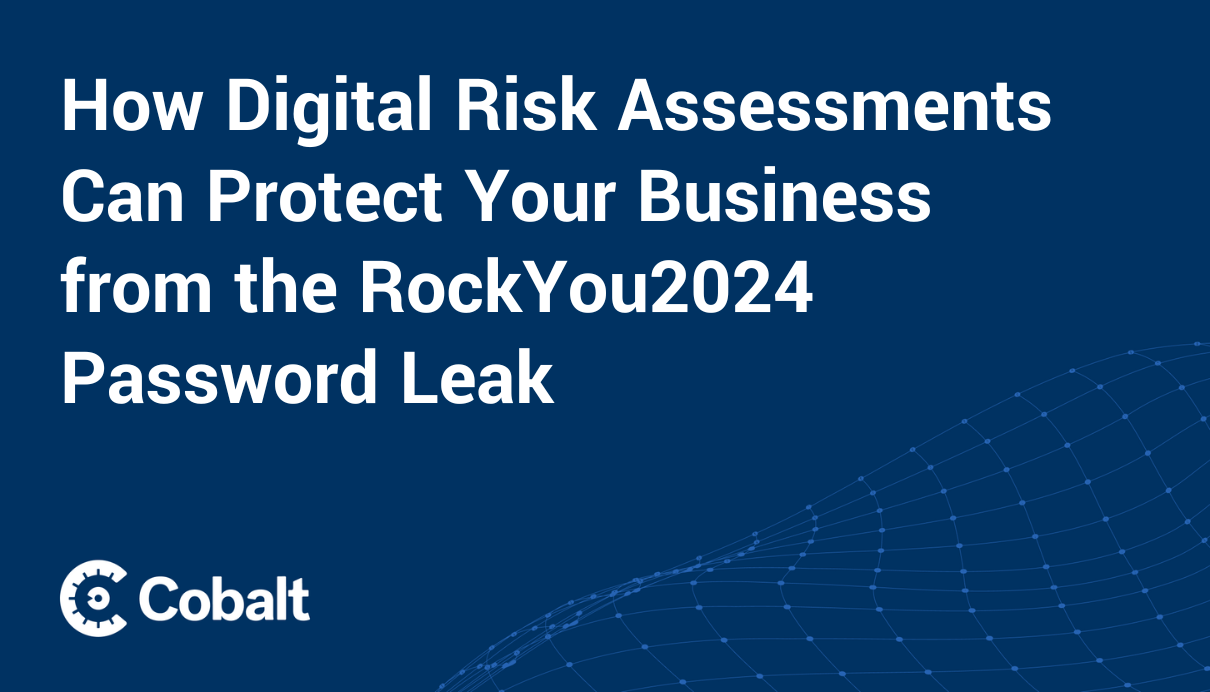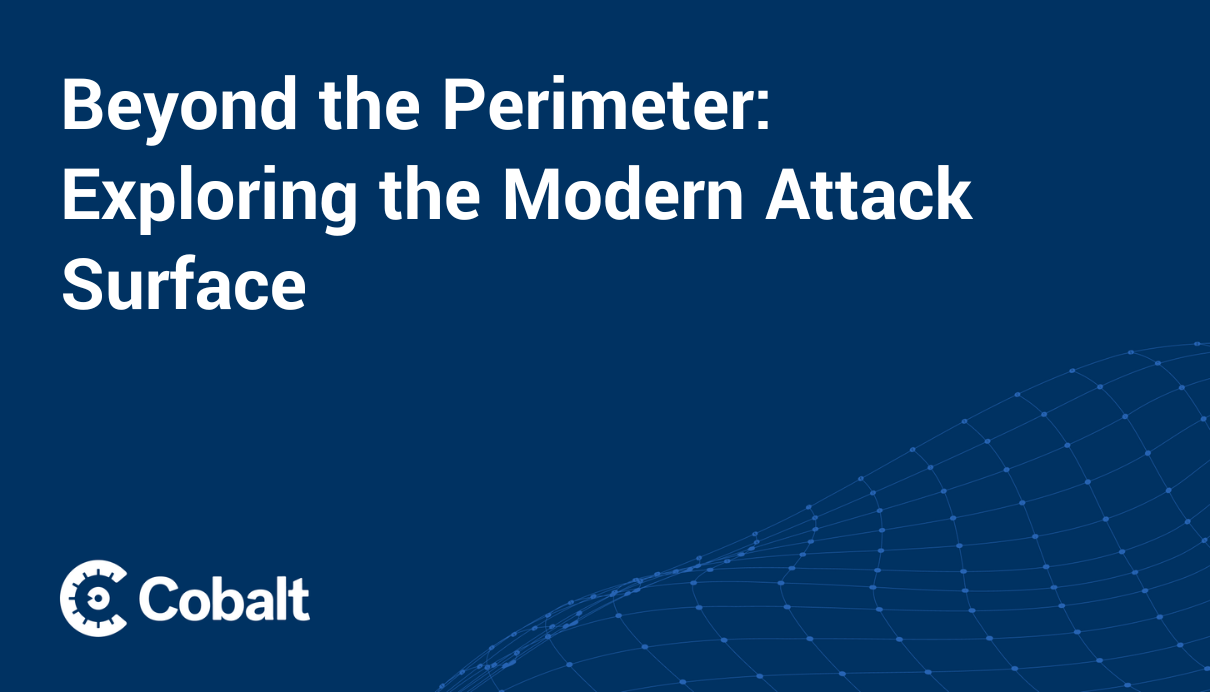Open Source Intelligence (OSINT) is an essential step for cybersecurity professionals. It enables them to gather publicly available information to enhance security measures. However, mishandling this data can lead to significant security vulnerabilities.
Below, we'll explore several major security breaches that were facilitated by poor OSINT management, illustrating the potential risks and consequences of such oversights. We will also discuss strategies to mitigate these risks, emphasizing the critical role of digital risk assessments.
What is OSINT?
OSINT refers to the practice of collecting and analyzing information from publicly available information to support intelligence and security operations. In the context of cybersecurity, OSINT is used to identify potential threats and vulnerabilities by examining data from various open sources, such as websites, public records and government databases, news articles and media reports, online forums, and social media platforms such as LinkedIn.
While OSINT is an invaluable step for proactive security planning, it is essential to recognize that cybercriminals can also exploit these techniques for malicious purposes. Threat actors can leverage OSINT to:
- Gather personal information for social engineering and identity theft
- Identify vulnerabilities in organizations' infrastructure such as IP addresses
- Profile key individuals for targeted phishing campaigns
- Piece together sensitive details inadvertently exposed across multiple sources
- Train AI models for malicious applications
In the following sections, we'll see some real-world examples of OSINT-related security breaches to explore the potential consequences when OSINT is not effectively managed. By examining these case studies, we aim to highlight the critical importance of proactive OSINT management in maintaining a strong cybersecurity posture.
Top Cybersecurity Breaches Fueled by OSINT
Sony Pictures (2014)
In November 2014, a group calling itself the "Guardians of Peace" (GOP) hacked into Sony Pictures' computer systems. They stole a large amount of confidential data, including employee personal information, executive salaries, and unreleased films. The attackers used a combination of techniques, including OSINT, to gather information about Sony's network infrastructure and employees before launching their attack.
Prior to the hack, the attackers had spent months researching Sony Pictures and its employees online. They used OSINT techniques to gather information from public sources such as social media profiles, company websites, and online databases. This allowed them to map out Sony's network infrastructure, identify key personnel, and craft highly targeted phishing emails to trick employees into revealing their login credentials.
Once the attackers gained access to Sony's network, they used malware to steal sensitive data and erase the company's computer hard drives. They then leaked the stolen data online, causing significant damage to Sony's reputation and financial losses estimated at $100 million.
By leveraging publicly available information, the attackers were able to gather intelligence on their target and plan a highly sophisticated attack that caused widespread damage.
This incident also highlights the importance of securing both technical infrastructure and human factors in cybersecurity. While having strong network defenses is crucial, organizations must also educate their employees about the risks of oversharing information online and how to spot potential phishing attempts.
Ashley Madison (2015)
The Ashley Madison data breach in 2015 had a significant OSINT component. Ashley Madison, a dating website that catered to individuals seeking extramarital affairs, suffered a massive data breach that exposed the personal information of over 30 million users.
The attackers, who identified themselves as the "Impact Team," claimed to have stolen the company's user databases, financial records, and other sensitive information. They threatened to release the data publicly unless Ashley Madison and its parent company, Avid Life Media, shut down the website.
When their demands were not met, the attackers followed through on their threat and released the stolen data on the dark web. The leaked data included users' names, email addresses, physical addresses, phone numbers, and credit card transactions.
The Ashley Madison breach is notable from an OSINT perspective because the leaked data quickly became a valuable source of intelligence for a wide range of actors, including cybercriminals, journalists, and private investigators. The data was used to expose the identities of Ashley Madison users, many of whom had used the site to engage in extramarital affairs.
In some cases, the leaked data was used for blackmail and extortion, with attackers threatening to reveal users' activities on the site unless they paid a ransom. The breach also had significant consequences for many of the individuals whose data was exposed, including job losses, divorces, and even suicides.
Exactis (2018)
Exactis, a data broker, exposed a database on a publicly accessible server that included nearly 340 million records of detailed personal information, including phone numbers, home addresses, email addresses, and other individual characteristics.
A security researcher found the exposed data by using simple search tools to scan for unsecured databases on popular cloud platforms. This data was accessible to anyone with an internet connection, showcasing the risks of inadequate data protection and the ease with which personal data can be harvested using OSINT techniques.
CENTCOM (2015)
Another cybersecurity incident caused by OSINT tactics is the 2015 data breach at the U.S. Central Command (CENTCOM). In this incident, a group of hackers known as "CyberCaliphate" used OSINT techniques to gather information about CENTCOM's social media accounts and eventually take control of them.
The attackers began by using OSINT to identify CENTCOM's Twitter and YouTube accounts, as well as the personal social media accounts of some of its employees. They then used this information to launch a targeted phishing campaign against CENTCOM personnel, sending them malicious links and attachments designed to steal their login credentials.
Once the attackers obtained the necessary login information, they were able to take control of CENTCOM's Twitter and YouTube accounts. They then posted propaganda messages and videos on these accounts, causing significant embarrassment and reputational damage to the organization.
The CENTCOM breach is a clear example of how OSINT techniques can facilitate a cyberattack. By leveraging publicly available information about the organization and its employees, the attackers were able to craft highly targeted phishing messages that were more likely to succeed in stealing login credentials.
This incident also highlights the importance of operational security (OPSEC) in preventing OSINT-driven attacks. By being more careful about the information they share online, both organizations and individuals can make it harder for attackers to gather the intelligence they need to plan and execute their attacks.
First American Financial Corp. (2019)
The First American Financial Corp. data breach in 2019 was a significant cybersecurity incident that exposed hundreds of millions of sensitive customer records. While the breach was not directly caused by malicious OSINT gathering, it highlights the potential risks associated with inadvertently exposing sensitive data that can be easily accessed by anyone, including those with malicious intent.
In May 2019, a security researcher discovered a vulnerability in First American's website that allowed anyone to access sensitive customer data without authentication. The vulnerability was due to a design defect in an application that exposed approximately 885 million sensitive customer financial records dating back 16 years. The exposed data included bank account numbers, statements, mortgage and tax records, Social Security numbers, wire transaction receipts, and driver's license images.
The researcher found that customer documents were accessible through a sequential number in the URL, making it easy for anyone to access other documents by simply changing the number. This means that if a malicious actor had discovered this vulnerability, they could have used OSINT techniques to gather and exploit the exposed data for various nefarious purposes, such as identity theft, financial fraud, or targeted phishing campaigns.
However, the researcher's ease of access to the data highlights the potential for malicious actors to exploit similar vulnerabilities using OSINT techniques.
Ways to Protect Against Leaked Data
To mitigate the risks associated with leaked data and OSINT-related vulnerabilities, companies can implement several actionable strategies:
- Digital Risk Assessment: Regularly conduct digital risk assessments to identify and evaluate the risks associated with digital assets. A comprehensive digital risk assessment helps in understanding where your organization stands in terms of security and what measures need to be improved or implemented. More on the importance of this can be read at Cobalt's blog on Digital Risk Assessment.
- Data Encryption: Encrypt sensitive data both at rest and in transit to ensure that even if data leakage occurs, the information remains protected from unauthorized access.
- Strong Access Controls: Implement strict access control measures to ensure that only authorized personnel have access to sensitive data. This includes using multi-factor authentication (MFA) and ensuring that permissions are regularly reviewed and adjusted based on the principle of least privilege.
- Regular Security Audits: Conduct regular security audits to check for vulnerabilities in the system that could potentially be exploited. This should include penetration testing and vulnerability assessments by external security experts.
- Employee Training and Awareness: Continuously educate employees about the risks of data leaks and train them on best practices for data protection. This should include training on recognizing phishing attempts and other social engineering attacks.
- Monitor and Control Information Sharing: To minimize exposure, use tools to monitor and control what information is shared publicly or through third parties. Implement data loss prevention (DLP) solutions to track and prevent sensitive data from being sent unintentionally outside the corporate network.
- Incident Response Plan: Develop and maintain an effective incident response plan that can be quickly activated in the event of a data breach. This plan should outline roles, responsibilities, and procedures for containing and mitigating any leaks.
- Secure Software Development Practices: Ensure that security is integrated into the software development lifecycle. This includes regular code reviews, updating and patching third-party libraries, and employing static and dynamic analysis tools.
- Utilize OSINT Tools Ethically: Use OSINT tools to monitor how your organization's data appears in public domains or on the dark web. This proactive approach allows you to react swiftly if sensitive information is leaked.
Enhancing Cybersecurity with Proactive OSINT Management and Pentesting
These incidents underscore the essential need for thorough management of OSINT practices. Particularly, they stress the importance of operational security (OPSEC) and the minimization of digital footprints to thwart malicious efforts. Furthermore, they highlight the need for a multifaceted cybersecurity strategy that includes rigorous digital risk assessments, such as pentesting.
Such assessments are critical not only in identifying potential data leaks and vulnerabilities but also in ensuring that preventive measures, like strong access controls and regular security audits, are both effective and up to date.
Ultimately, the proactive and ethical use of OSINT steps can significantly enhance an organization's defensive posture by turning potential vulnerabilities into fortified points of security.








